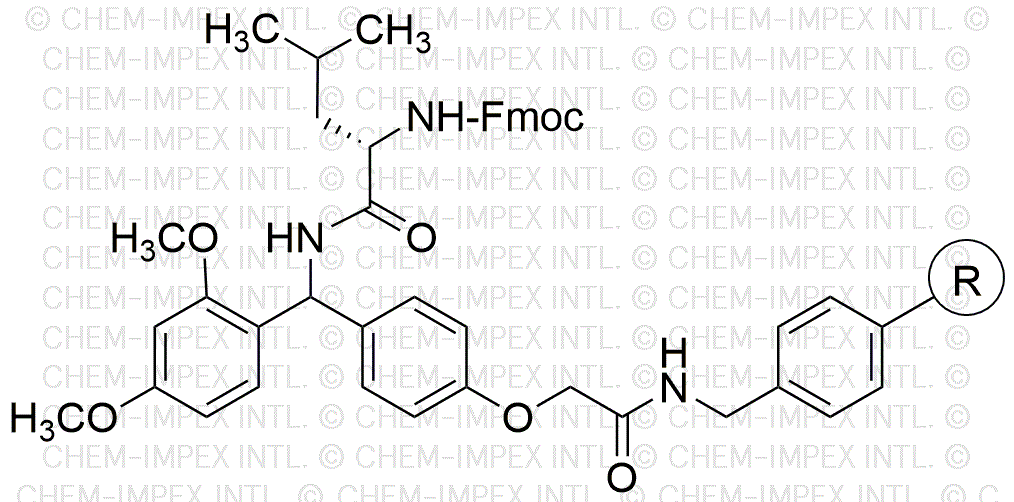Fmoc-leucine Rink amide AM resin is widely utilized in research focused on:
- Peptide Synthesis: This resin serves as a solid support for the synthesis of peptides through solid-phase methods, allowing for efficient and high-yield production of complex peptide sequences.
- Drug Development: In pharmaceutical research, it is used to create peptide-based drugs, facilitating the discovery of new therapeutics with specific biological activities.
- Bioconjugation: The resin can be employed in bioconjugation processes, linking peptides to other molecules, which is crucial for developing targeted drug delivery systems.
- Protein Engineering: Researchers utilize this resin to modify peptides for protein engineering applications, enhancing stability and functionality in various biological assays.
- Academic Research: It is a valuable tool in academic laboratories for teaching and exploring peptide chemistry, providing hands-on experience in modern synthetic techniques.
General Information
Properties
Safety and Regulations
Applications
Fmoc-leucine Rink amide AM resin is widely utilized in research focused on:
- Peptide Synthesis: This resin serves as a solid support for the synthesis of peptides through solid-phase methods, allowing for efficient and high-yield production of complex peptide sequences.
- Drug Development: In pharmaceutical research, it is used to create peptide-based drugs, facilitating the discovery of new therapeutics with specific biological activities.
- Bioconjugation: The resin can be employed in bioconjugation processes, linking peptides to other molecules, which is crucial for developing targeted drug delivery systems.
- Protein Engineering: Researchers utilize this resin to modify peptides for protein engineering applications, enhancing stability and functionality in various biological assays.
- Academic Research: It is a valuable tool in academic laboratories for teaching and exploring peptide chemistry, providing hands-on experience in modern synthetic techniques.
Documents
Safety Data Sheets (SDS)
The SDS provides comprehensive safety information on handling, storage, and disposal of the product.
Product Specification (PS)
The PS provides a comprehensive breakdown of the product’s properties, including chemical composition, physical state, purity, and storage requirements. It also details acceptable quality ranges and the product's intended applications.
Certificates of Analysis (COA)
Search for Certificates of Analysis (COA) by entering the products Lot Number. Lot and Batch Numbers can be found on a product’s label following the words ‘Lot’ or ‘Batch’.
Numéro de catalogue
Numéro de lot/série
Certificates Of Origin (COO)
This COO confirms the country where the product was manufactured, and also details the materials and components used in it and whether it is derived from natural, synthetic, or other specific sources. This certificate may be required for customs, trade, and regulatory compliance.
Numéro de catalogue
Numéro de lot/série
Safety Data Sheets (SDS)
The SDS provides comprehensive safety information on handling, storage, and disposal of the product.
DownloadProduct Specification (PS)
The PS provides a comprehensive breakdown of the product’s properties, including chemical composition, physical state, purity, and storage requirements. It also details acceptable quality ranges and the product's intended applications.
DownloadCertificates of Analysis (COA)
Search for Certificates of Analysis (COA) by entering the products Lot Number. Lot and Batch Numbers can be found on a product’s label following the words ‘Lot’ or ‘Batch’.
Numéro de catalogue
Numéro de lot/série
Certificates Of Origin (COO)
This COO confirms the country where the product was manufactured, and also details the materials and components used in it and whether it is derived from natural, synthetic, or other specific sources. This certificate may be required for customs, trade, and regulatory compliance.


